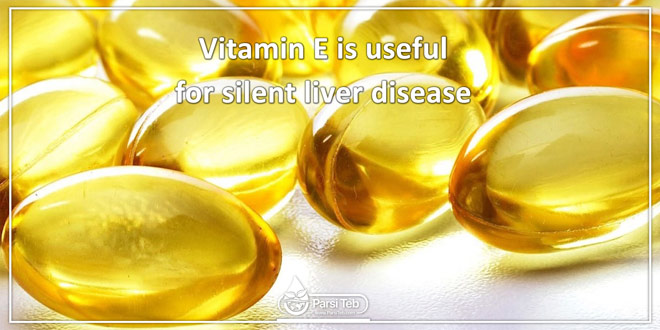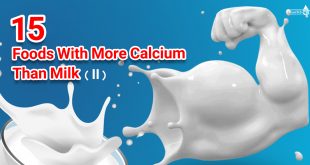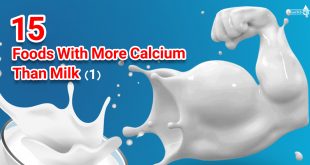Vitamin E Provides New Hope for Patients With ‘Silent’ Liver Disease
ScienceDaily (May 3, 2010) — A daily dose of a specific form of vitamin E significantly improved the liver disease, nonalcoholic steatohepatitis (NASH), according to a study funded by the National Institute of Diabetes and Digestive and Kidney Diseases (NIDDK) of the National Institutes of Health. Results were published April 28 online in the New England Journal of Medicine. In addition, Actos (pioglitazone), a drug used to treat diabetes, also improved many features of NASH but was associated with weight gain.
NASH is a chronic liver disease that is linked to weight gain and obesity and can lead to cirrhosis, or scarring, liver cancer and death. It resembles alcoholic liver disease but occurs in patients who drink little or no alcohol. NASH can occur in children, the elderly, normal-weight, and non-diabetic persons. The disease is believed to be caused by abnormal metabolism of fats, which increases levels of oxidants, compounds that transfer oxygen in the liver. This disease affects about 3 to 4 percent of the U.S. population, leads to death from cirrhosis, and increases the risk of death from cardiovascular disease. There is currently no approved treatment for NASH.
In the Pioglitazone or Vitamin E for NASH Study (PIVENS), investigators from the NASH Clinical Research Network (CRN) compared the two different treatments to placebo. Vitamin E functions as an anti-oxidant while Actos improves the sensitivity of cells to insulin, a hormone that controls sugar and fat metabolism. PIVENS is the largest placebo-controlled, randomized clinical trial of therapies ever conducted for NASH.
“This is an important landmark in the search for effective treatments for NASH,” said Pat Robuck, Ph.D., M.P.H., the NASH CRN project scientist and director of the clinical trials program in NIDDK’s Division of Digestive Diseases and Nutrition.
The PIVENS trial randomly assigned 247 adults with NASH and without diabetes into three groups. Men and women aged 18 years and older were randomized to either receive 30 milligrams of Actos daily, 800 international units of a form of vitamin E (RRR-alpha-tocopherol) daily, or placebo for 96 weeks. Researchers reported that vitamin E and Actos helped certain patients with NASH.
After 96 weeks of treatment, vitamin E improved all features of NASH except the degree of cirrhosis in the liver. Forty-three percent of participants treated with vitamin E met the primary endpoint of the trial compared to only 19 percent of those who received a placebo. The primary endpoint was a composite of the scores for several features of NASH–retention of lipids, liver inflammation, and liver degeneration. The scores were used to assess disease activity.
While Actos improved liver inflammation and retention of lipids in 34 percent of individuals who received it, suggesting a benefit, the improvement fell short of being statistically significant. Actos also led to an undesirable weight gain of 10 pounds over the 96-week trial. There was an early improvement in liver enzyme tests among participants receiving either Actos or vitamin E. However, upon stopping the medications, the liver enzymes worsened again suggesting the need for long-term treatment.
While the PIVENS trial provides evidence that vitamin E benefits NASH patients, it is not a panacea, said Arun Sanyal, M.D., NASH CRN co-chair and PIVENS principal investigator and chair of gastroenterology at Virginia Commonwealth University in Richmond.
“This study was conducted in people who had NASH but did not have diabetes. The benefits of either treatment in NASH patients who have diabetes remain unknown,” said Sanyal. “Also, the study lasted only two years and the potential long-term benefits and risks of taking vitamin E or Actos in these doses are still uncertain.”
Researchers acknowledge that many participants receiving these treatments did not improve. To better understand response to treatment, the NASH CRN is engaged in studies to define simple, non-invasive methods to determine if an individual patient is responding to drug therapy. A liver biopsy is currently the best way to assess response to treatment for NASH.
“The PIVENS trial provides key evidence to support the use of vitamin E for selected patients with NASH. However, before prescribing either drug, physicians must not only weigh the potential risks and benefits of treatment, particularly with long-term therapy, but also the need for future liver biopsies to assess the response to treatment,” said Stephen P. James, M.D., director of NIDDK’s Division of Digestive Diseases and Nutrition. “Use of vitamin E at these doses for NASH should be monitored by a physician.”
 Parsi Teb Physical and Mental Health Journal
Parsi Teb Physical and Mental Health Journal 



